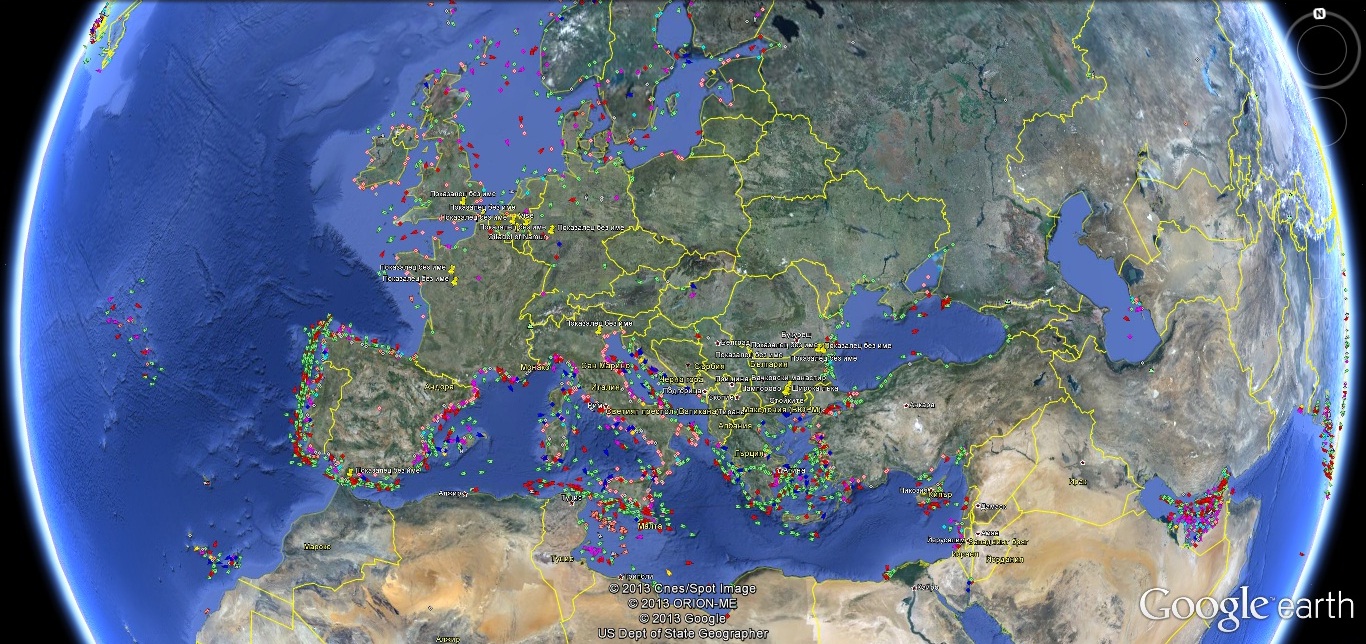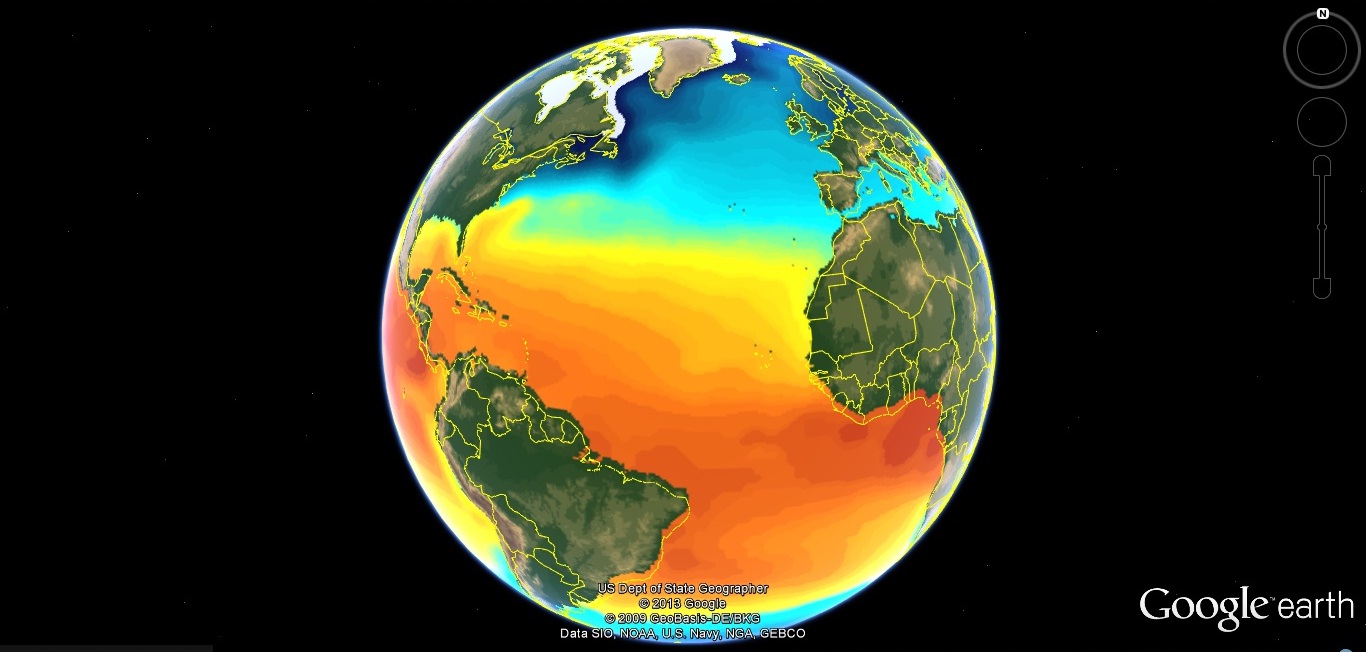Marine Traffic
Marine Traffic - live map
represents positions tracking based on AIS data. Real-time ship
locations and port arrivals and departures.
System (AIS) is an automatic tracking system used on ships and by vessel
traffic services (VTS) for identifying and locating vessels by
electronically exchanging data with other nearby ships AIS Base stations
and Satellites. When satellites are used to detect AIS signatures then
the term Satellite-AIS (S-AIS)is used. AIS information supplements
marine radar, which continues to be the primary method of collision
avoidance for water transport. Information provided by AIS equipment,
such as unique identification, position, course, and speed, can be
displayed on a screen or an ECDIS. AIS is intended to assist a vessel's
watchstanding officers and allow maritime authorities to track and
monitor vessel movements. AIS integrates a standardized VHF transceiver
with a positioning system such as a LORAN-C or GPS receiver, with other
electronic navigation sensors, such as a gyrocompass or rate of turn
indicator. Vessels fitted with AIS transceivers and transponders can be
tracked by AIS base stations located along coast lines or, when out of
range of terrestrial networks, through a growing number of satellites
that are fitted with special AIS receivers which are capable of
deconflicting a large number of signatures. The International Maritime
Organization's International Convention for the Safety of Life at Sea
requires AIS to be fitted aboard international voyaging ships with gross
tonnage (GT) of 300 or more tons, and all passenger ships regardless of
size.
Google Earth Application for Free Ship Tracking

The information of vessels positions provided by MarineTraffic is available in .KML format which is used by the Google Earth application. Google Earth is freely available for personal use and provides very detailed and efficient browsing in world's satellite maps. If Google Earth is installed in your computer, you may see the vessels positions in real time and you may browse quickly the areas of your interest, without the limitations of the web page maps.
DOWNLOADSeas Surface Temperature

The temperature of the surface of the ocean is commonly referred to as sea surface temperature. Sea surface temperature is now recognized as one of the most important variables related to the global ocean atmosphere system. It is a key indicator for climate change, is widely applied to studies of upper ocean processes and air-sea heat exchange, and is used as a boundary condition for numerical weather prediction (NWP). Changes in sea surface temperature, such as the large changes in ocean temperatures during El Nintildeo / La Nintildea events, can have dramatic impacts on fisheries by forcing fish into regions where they are not commonly found. Additionally, coral-bleaching due to warm ocean temperatures can result in reduced fish habitat and fish species diversity. Changes in sea surface temperatures impact our weather and are therefore an important measurement for accurate weather forecasting of both daily weather and severe events, such as hurricanes. Like Earth's land surface, sea surface temperatures are warmer near the equator and colder near the poles. Wind driven ocean currents move warm and cold water around the world's oceans like giant rivers. Surface currents can be seen in sea surface temperature images from satellites. Traditionally, SST has been measured using infrared radiometers called AVHRRs and more recently MODIS. Recently, special microwave technology allows the AMSR-E sensor on NASA's Aqua satellite to measure sea surface temperatures through clouds, something no satellite sensor before it was able to do across the whole globe. An anomaly is when something is different from normal, or average. A sea surface temperature anomaly is how different the ocean temperature at a particular location at a particular time is from the normal temperatures for that place. For example, a global map of sea surface temperature anomaly for May 2006 would show where the temperatures in May 2006 were warmer, cooler, or the same as other Mays in previous years. Sea surface temperature anomalies can happen as part of normal ocean cycles or they can be a sign of long-term climate change, such as global warming. Daily global interpolated sea surface temperature data from the Advanced Microwave Radiometer for EOS (AMSR-E) and the Moderate Resolution Imaging Spectroradiometer (MODIS), courtesy Remote Sensing Systems. Image processing by NASA's Earth Observatory and Ames Research Center.
Download the Google Earth .kml file of SEA SURFACE TEMPERATURE
DOWNLOADDownload GOOGLE EARTH, if it is not already installed in your computer, here:
DOWNLOAD